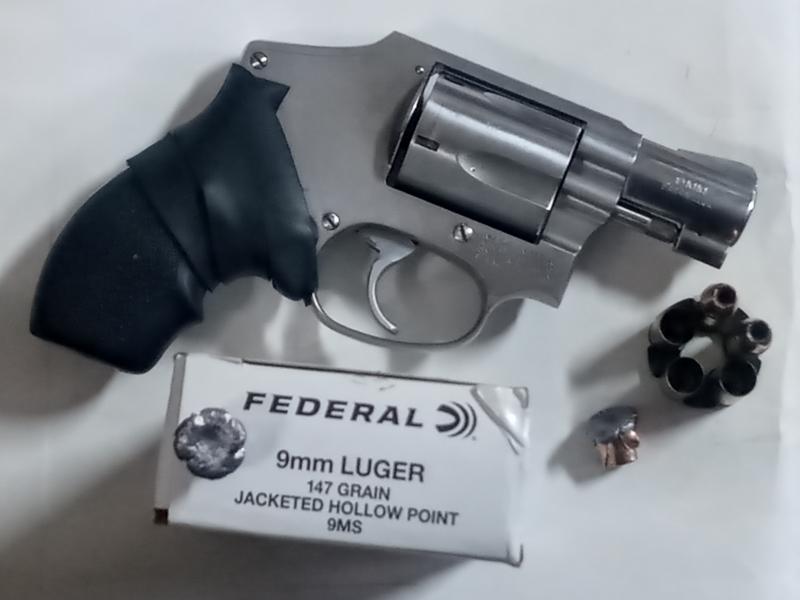With my ammo, the bullet was short enough that it could go back into the cylinder without hitting the case, I suspect that this is true with many 9mm bullets (because the cylinder is the same length as the .357 version, but the case is much shorter) . In my case, it only took finger pressure to push it back in. Also, if it is only protruding slightly, it may clear the frame at the bottom, where there is considerably more room than the cylinder gap.
I would be interested if anyone else had trouble getting a pulled bullet out of the cylinder.
edit:spelling
Last edited by runngun; 03-15-2024 at 10:06 AM.
I had one of my reloads pull in my LCR. Round #5 stopped cylinder rotation. No drama, turned the gun vertical, hit the ejection rod and very slight pressure to dislodge the pulled bullet. Dropped in a fresh moon clip and kept shooting. I have since increased the crimp on the Lee FC die.
Like others, I have had problems with Blazer ammo. I couldn't get through a whole mag in my P365 without some type of feeding issue in or out. My Beretta 92F had many FTEx with the same ammo. I just say no to Blazer now.
Long ago I standardized and stocked up on Federal 147 grain Hi-Shok 9MS for my S&W 940 and Beretta 92. Velocity is 900 fps in the 1-7/8" snub and 1030 in the 4.9" Beretta. This contract load has visible lacquer primer sealant and Black Lucas bullet sealant. It has a good street record in OIS.

@Hideeho, in this context, what do you mean by dwell time, and how does it affect a bullet's terminal performance? I would think that muzzle velocity would be the deciding factor (possibly spin rate, although I've only heard of it making a difference in rifles).
The reason longer barrels give better velocities is the bullet is being pushed by the expanding gasses from the powder for a longer period of time. Thus allowing a higher percentage of the energy from that powder to be converted into kinetic energy pushing the bullet, and leaving less energy to be converted into heat, light, and noise.
A slower bullet takes more time to get down the barrel, and thus should get a higher percentage of that powder converted to kinetic energy just like a faster bullet in a longer barrel.
This seems generally true to me, from looking at chrono tests with 5.56 the heavier bullets perform relatively better in short barrels. Not sure how well that will stack up in handgun barrels where they are so short to begin with, would be interesting to get data on this.